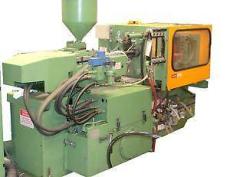
Rotomoulding, or as it’s also known, rotational moulding is a technology used to mould plastics that is ideal for making hollow articles, according to whatever specification is required. Rotational moulding is used to create a wide variety of products and there is almost no limit to the size of item the technology can produce, making the process useful for thousands of different applications.
The Process
The concept of rotomoulding is pretty straightforward and involves a plastic material, usually in powder form, that is placed into a hollow mould to create a myriad of products for all kinds of purposes in industry and also in the home. Once the mould has been filled with powdered plastic, it is then closed and rotated slowly and heated in a special oven. As the mould is heated, the polymer inside it slowly melts and expands into the mould evenly to create a perfectly smooth product, with precision measurements. When the polymer has fully melted, the mould is then cooled to solidify the plastic form inside.
Materials
The material used in rotomoulding is mostly Polyethylene (PE), which is reasonably easy to grind into a powder at ambient temperatures. Other polymers have been developed in recent years and there are some processes using PVC in a liquid form, although 97% of rotational moulded products are still made of PE. The downside of alternative polymers is generally that they are less easy to grind into a powder, which has been shown to be the best way of creating moulded plastics. A polymer powder which melts when heated fills even the most complex of moulds to create perfect shapes and forms in plastic.
Key advantages
There are several different techniques for producing moulded plastics but rotomoulding has some distinct advantages. For a start, there are lower tooling costs for rotational moulding which means there’s a lower investment required for people looking to create custom plastic items on a speculative basis. Rotomoulding is also a better process for people looking for inexpensive low volume runs of particular products or items.
The rotomoulding process makes it perfect for creating perfect shapes and so it’s possible to produce complex products with features such as moulded inserts, varying surface textures and ribbing to stiffen the plastic in certain areas if required. The powder polymer allows for consistent wall thickness which means that each product has good strength and integrity, whereas other methods such as blow-moulding stretches the material inside the mould when it melts which can weaken created shapes in places.
Products
The kinds of products rotomoulding can create include things like containers, crates, pallets and other items for material handling. Because the process lends itself really well to creating hollow plastic shapes, it is used a lot to produce floating things like kayaks and canoes and even buoys and pontoons. There really is no end of the potential rotational moulding has for creating plastic products for an infinite range of products, making it the most popular process for most people, industries and businesses looking to create plastics products.






